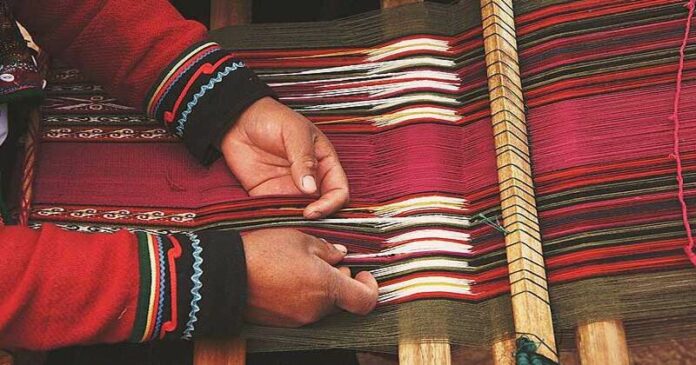As the fashion landscape continually evolves, handloom fibres take centre stage, ushering in a new era of sustainability and conscious choices. With nearly 50% of textile brands and fashion decision-makers recognising the importance of traceability for reduced carbon emissions, the growing consumer segment demands transparency in their garment origins. India’s handloom sector stands at the forefront, addressing these consumer concerns, and propelling sustainability forward. Delving beyond conventional materials like cotton and silk, the handloom sector embraces a bold shift towards new-age natural blends. A myriad array of ingenious experimentation emerges in the world of fashion, showcasing the resilient charm of hemp and the exquisite allure of pineapple fibres, each adorning garments with eco-friendly elegance. This National Handloom Day, let us explore the remarkable journey of these new-age handloom fibres, redefining fashion with every ethereal weave:
1. Hemp Fibre
Its sheer ubiquity renders extensive utilisation of hemp in the fashion industry as a most desirable prospect. Along with bamboo, hemp is the fastest growing crop, and requires only half as much water as cotton, besides being naturally resistant to insects and pests. Much like cotton, hemp lends itself to large-scale production on the traditional handloom and holds the promise of economically empowering a major part of the over three million-strong workforce in the sector in India. Cultivation of hemp in India, initially hamstrung by misconceptions and stringent government regulations, is now taking off with active government support in various parts of the country. Encouraging large-scale cultivation of industrial hemp will galvanise the handloom sector, opening new avenues for monetisation.
2. Banana Peel and Stem Fabric
The quintessentially ‘Tropical’ fruit, there is more to a banana than its lingering taste. While the fruit is, by itself, rich in fibre, it is nothing compared to the fibrous content in its peel, and stem – what would otherwise be discarded can feedthe fashion industry. While the Philippines has long been driving the production of banana fabric, India has dislodged its Asian neighbour from the top spot and is now the leading producer of banana fabric. Strong, breathable, and soft, banana fabric has all the prerequisites to stake its claim as a fashionable alternative to cotton and silk. Notwithstanding its abundant availability, the near prohibitive requirement of the labour force to produce banana fabric often deters its large-scale production.
3. Pineapple Fabric
Historically associated with the elite of the Philippines, ‘Pineapple Silk’ is now back in vogue, as a more sustainable alternative to cotton and traditional silk. The fashion industry has come to the aid of hapless pineapple farmers in India, reeling under the impact of climate change, which has wrought havoc with the yield of the fruit. Farmers who would otherwise have been left clutching huge losses have found an alternative source of income through the sale of the leaves of pineapple to textile units. Pineapple fabric comes into being when each strand, scraped from its leaves is hand woven into filaments. Many textile manufacturers take to blending the fibre with cotton to render the process less labour intensive.
4. Modal Fabric
For centuries on end, the Indian Beech tree has supplied medicine, and biogas to households. And now with the world in the grips of a ‘Sustainability’ dilemma, this pan-tropical tree is being used as a source of raw material for the fashion industry. It is from the beech tree that a more sustainable alternative to the conventional viscose yarn – Rayon – is extracted. Completely biodegradable, and requiring less water than cotton for cultivation, the use of modal as a desirable fabric in fashion was pioneered by Japan in the 1950s. In the Indian handloom industry, the use of modal is anything but extensive. However, several hand-woven modal silk and cotton sarees and other textiles are slowly finding a place in many boutique stores and online retail outlets. The abundance of beech in India renders use of modal fabric attractive for stakeholders in the natural fibre ecosystem.
As a growing segment of consumers embraces “Responsible Fashion,” the handloom artisans’ success lies in weaving a future that harmonises tradition, innovation, and eco-friendly elegance. In just six months of 2022, India’s export revenue exceeded USD 7 billion, driven not only by fashionable hand-woven garments but also by interior design accessories like mats, carpets, and cushions. With nearly 24 lakh looms across the country, the future sustainability of this rich tradition hinges on its adeptness in working with natural fibres.

